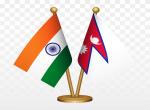Introduction
Countries surrounding the Bay of Bengal include India, Sri Lanka, Bangladesh and Myanmar; besides there are two landlocked countries – Nepal and Bhutan. These countries depend on the Bay of Bengal for several reasons such as marine and natural resources, energy trade, etcetera. The region also hosts vital shipping routes linking the littoral and hinterland to each other and to the rest of the Indian Ocean littorals. Lying at the crossroads between the Indian and Pacific Oceans, it also serves as the key transit point between the two waters.
Due to the shift of geopolitical focus of the world towards the Indo-Pacific region in recent years, significance of the Bay of Bengal region has re-emerged. As the importance of the region increases, the threats to it will also rise. Traditional security issues, such as regional rivalry to non-traditional security threats such as piracy, climate change and illegal trafficking of humans and narcotics have been prevalent in the Bay of Bengal region and have seen a rise in recent years.
Drug trafficking in the Bay of Bengal region is not a new concern, as its proximity to the ‘Golden Triangle’ has made it a transit route for several drug networks.[1] In recent years, specifically during the COVID-19 pandemic, there has been a rise in the presence of new psychoactive substances (NPS) or synthetic drugs in this region.[2] The Golden Triangle has been notorious for the production and illicit trade of opium and opium-based narcotics. However, the predominant drugs in the Bay of Bengal (both in production and consumption) have been plant-based, such as cocaine, heroin, opiates and cannabis. The particular category of drugs discussed in this study is Amphetamine-Type Substances (ATS).[3] The presence of ATS in the Bay of Bengal and surrounding countries has seen a steep rise. The region is not just a consumption hub but has also emerged as the manufacturer of the ATS and other synthetic drugs along with their precursor chemicals.
This study aims to present data showing how the trends in the illicit drug market in the Bay of Bengal have changed, highlighting a shift from a predominantly plant-based drug market to a market with more synthetically produced substances. With an overall trend, the study will highlight the possibility of a different approach to tackle drug trafficking in the region.
Drug Situation in the Bay of Bengal – Sources, Transit and Consumption
The United Nations Office of Drugs and Crime (UNODC) defines drug trafficking as a global illicit trade that involves the cultivation, manufacture, distribution and sale of substances subject to drug prohibition laws (UNODC n.d.). According to the UNODC, the narcotics market has evolved over the past decade. Especially in South and Southeast Asia, there has been a shift in the trend regarding the manufacture and transit of drugs (UNODC 2022). In the Indian Ocean Region (IOR), drug trafficking originates from two prominent areas –the ‘Golden Crescent’ in the West comprising Iran, Afghanistan and Pakistan, whereas the ‘Golden Triangle’ in the East, having Myanmar, Thailand and Laos. While the Golden Crescent is a source of the heroine, the Golden Triangle has been known for opium and cannabis (UNODC, Drug Trafficking n.d.).
In 2020, a two-day Conference on Combating Drug Trafficking involving the partner countries of the BIMSTEC (The Bay of Bengal Initiative for Multi-Sectoral Technical and Economic Cooperation) were organised in New Delhi, India. Several areas of concern regarding the drug problem in the BIMSTEC region were identified in the meeting (PIB 2020) – firstly, the geographical proximity of the region to the Golden Triangle and an increased supply of both heroin and Methamphetamine (an ATS) in the countries. Secondly, drug trafficking through sea routes is being enabled due to the well-established trade routes in the Bay of Bengal, specifically for the pharmaceutical industry. The report published at the end of the two-day conference by PIB (2020) states that “…the BIMSTEC region is one of the most thriving centres of pharmaceutical manufacture and trade …. This has also made the BIMSTEC region very vulnerable to the diversion and trafficking in Pharmaceutical Drugs” (PTI 2020). The third issue was technological developments, specifically darknet use in drug trafficking.
The Case of Methamphetamine in the Region
In one of the two-day conference sessions on “Production & Trafficking of Methamphetamine in the Region”, the issue of the manufacturing and trafficking of Methamphetamine in the region was also discussed (PIB 2020). The shared and increasing concern amongst all the countries indicates a shift in the trend of dominant drugs in the region. While the plant-based heroine is sourced from opium-growing nations such as Afghanistan, synthetic Methamphetamine is manufactured right in the neighbourhood of the Bay of Bengal (PIB 2020).
In 2021, a record 171.5 tons of methamphetamine was seized in East and Southeast Asia (UNODC 2022, 5). The most substantial increase was in the lower Mekong subregion (Cambodia, Lao PDR, Myanmar, Thailand and Vietnam). Almost 89 per cent of the total seizures in 2021 came from this area (UNODC 2022, 5). According to the UNODC report data, methamphetamine tablets caused this increase in seizures. In contrast to that (Figure 1), the amount of crystalline, powdered and methamphetamine has decreased. However, the UNODC data has highlighted the increasing manufacture and trafficking of a methamphetamine tablet called ‘Yaba’, – which combines methamphetamine with caffeine to produce a highly addictive psychoactive pill (UNODC n.d.).
Illegal manufacture of methamphetamine has become increasingly concentrated in the lower Mekong subregion, specifically Myanmar (UNODC 2022, 7). Even in Cambodia, in 2021, two facilities were discovered, of which one was of the industrial scale. In 2020-2021, UNODC reported that there had been exponential growth in the seizures of precursors and non-controlled chemicals that are utilised in the manufacture of these synthetic drugs, as seen in the graph below (UNODC 2022, 9).
In almost two decades (1998-2017), the rise in the seizures of synthetic drugs has overtaken that of the plant-based drugs that have dominated the narcotics market so far. New psychoactive substances (NPS) and amphetamine-type stimulants (ATS) have also seen the most substantial increase in synthetic drugs. After cannabis and opioids, ATS have the most significant number of users worldwide (GSU 2020). The global number of ATS users has increased in the last two decades, from 30.2 million in the 1990s to approximately 50 million in 2017 (World Drug Report 2019).
Introduction and circulation of these synthetic drugs have contributed to a shift in the existing trends in the drug market in the Bay of Bengal, which earlier revolved around plant-based psychoactive substances such as heroin, opium and cannabis. Now the region has more instances of the illicit trade of synthetic drugs, which also requires new policies to be dealt with. This shift also suggests that the market is now more supply-driven (GSU 2020), as the manufacture of these drugs in high amounts can be done cost-effectively, causing the retail prices to drop as well. The Global Smart Update report, a publication by the UNODC that monitors narcotics trends in various regions of the world, highlights that the manufacturing of new psychotic substances or synthetic drugs is not restricted to a particular environment, such as a suitable climate or land.
Apart from finding a manufacturing space or facility, there is also the easy availability of alternate raw material that makes for low-cost production. The forensic profiles are also seemingly diversifying, with the primary precursors changing from ephedrine and pseudoephedrine to P-2-P based manufacturing methods (UNODC 2022, 15).[5] This shows that an alternate synthesis route is available should the illegal trade of the precursor chemicals be choked.
Following the emergence of the COVID-19 pandemic, distribution methods and maritime routes around the Andaman Sea and Malacca Strait have increased (UNODC 2022, 9). South Asia is an increasingly popular destination for the methamphetamine produced in Southeast Asia. This includes not just the methamphetamine tablets but also the crystalline form (Karimganj Police seizure account November, 2021). For instance, a seizure of 154 kg was reported in Nagaland in December 2021, and a 10.5 kg was reported in Guwahati (Assam) in March 2022 (Assam Rifles 2021, Nagaland Police 2022). In Bangladesh, around 33.6 kg of methamphetamine has already been seized since 2022, amounting to over 5.6 million methamphetamine tablets (Border Guard Bangladesh 2021-2022). [6]
There have also been instances of methamphetamine tablets being seized in the north-eastern states of India. One seizure was reported from Champai, Mizoram, in June 2022, valued at over ₹ one cr, by the Serchhip Battalion of Assam Rifles. The shipment was of 51,000 methamphetamine tablets, weighing about 5 kg. The official statement by the Assam Rifles also pointed out the ongoing and increasing smuggling of methamphetamine tablets along the India-Myanmar Border (North East Now 2022). Despite this crackdown over the past year, India’s northeast continues to suffer an influx of narcotics from the Myanmar border. Adulterated forms of heroin (brown sugar), methamphetamine tablets (Yaba), and a synthetic variant of the same— “World Is Yours” (WIY) have been prevalent in the region. Within Assam, between May-December 2021, around 260,000 tablets and around 16,000 bottles of cough syrup containing the precursor chemicals/synthetic substances were confiscated, as compared to 13 kg of heroin and 265 kg of cannabis— both plant-based drugs, during the same time (Bhattacharyya 2022).
“Free Movement Regime” and India-Myanmar Porous Border
A ‘Free Movement Regime’ exists between India and Myanmar, which allows ‘free movement’ for Indians and Burmese for 16 km on either side of the border. Insurgents and criminals take advantage of the porosity between these two nations. The socio-economic situation on this border is not up to the mark. Low levels of education, ethnic conflicts, poverty and unemployment make the local population more vulnerable to getting involved in last mile connectivity as drug carriers in hopes of better livelihood and living standards (Ashok 2019).
Not just the Myanmar border but other bordering nations with a coastline on the Bay of Bengal have seen an increase in the drug trade. A report by the International Narcotics Control Bureau (INCB 2019, 79) states that since 2011, Bangladesh has seen a thirty-fold increase in methamphetamine pills seizures, as well as an increase in the smuggling of pharmaceutical preparations, specifically codeine-based cough syrups, which are also prevalent in India and Bhutan. India-Bangladesh relations have been reasonably amicable and resulted in several successful and ongoing connectivity projects. However, as in the case of Myanmar, the porous border is vulnerable to misuse by rogue elements in Myanmar, posing a threat to India and Bangladesh.
Within a year (2015-2016), India saw a ten-fold increase in ATS seizures from 166 kg to 1,687 kg, with barely any increase in the number of cases. The information highlighted that while the number of seizures did not increase, the amount per shipment increased, indicating a larger scale of synthetic drug trafficking. The INCB also reported that Bangladesh's ‘Yaba’ tablets are sourced from Myanmar (INCB 2019, 83). In 2020, around 36.4 million Yaba/methamphetamine tablets were seized in Bangladesh. Along the India-Myanmar border, month-wise data shows high numbers. For instance, in 2020, around 190,000 Yaba tablets were seized in July, around 300,000 tablets in August, and around 241,900 in March 2021 (INCB 2022, 100). Synthetic ATS drugs are even making their way beyond the Bay of Bengal and being shipped to other countries. A seizure in June 2022 in Mumbai revealed parcels of methamphetamine and ATS drugs, 490 gm and 435 gm, respectively, headed to New Zealand and Australia (The Print 2022). The synthetic drug market in South and Southeast Asia is expanding outside the region, which could result in the Bay of Bengal area being identified as a supply point for ATS.
The proximity to the Golden Triangle and the region's booming pharmaceutical industry provides well-established land and maritime routes for the drug network. Several connectivity projects span the borders of the Bay of Bengal, and drug trafficking networks can misuse these routes. There is a trend of trafficking precursor chemicals like ephedrine and pseudoephedrine from India to Myanmar and reverse trafficking of methamphetamine into India from Myanmar. Indian authorities seized nearly three tons of these precursors in 2017, of which 500 kg were seized out of clandestine laboratories where ATS were being illegally manufactured (INCB 2019, 84). The INCB (2022, 101) report also states that India's large chemical and pharmaceutical industries remain highly vulnerable to diverting products to illegal channels for precursors.
As shown in Chart 4, the total amount of ATS, excluding ecstasy, seized in 2020 was around 599.38 metric tons, 27.4 per cent of which was seized from Myanmar, and region-wise, East and South-East Asia accounted for 48.3 per cent of the total, of which 56.7 % was from Myanmar. [7] The typical price in Myanmar is as low as USD 1.5 per gram for methamphetamine powder and USD 2.54 per unit for tablets, showing low costs for acquiring synthetic drugs in the country compared to the global prices.[8] The increase in synthetic ATS's presence in Myanmar could result from these low prices.
Since the Bay of Bengal is a crossroads between two regions, South Asia and South East Asia, understanding the narcotics trends here would affect the cross-border and domestic trends of the countries in both these regions. In 2020, countries in South East Asia recorded the largest ever amount of 170 tons seized of methamphetamine in the region (INCB 2022).
Post-COVID-19 pandemic, the restrictions do not seem to have hampered the drug market in South and South-East Asia. The use of darknet and courier services has grown in the region and has further intensified with cryptocurrencies (INCB 2022, 100). As per the findings of the office of the Narcotics Control Board of Thailand, around 2,300 accounts on various social networks were linked to drug trafficking from March to December 2020, of which 80 per cent were new accounts.
Data available on these regions suggests that a nexus exists along and around the junction of Myanmar, India and Bangladesh, where the illegal narcotics market is shifting from plant-based and demand-specific drugs to a supply-driven market of synthetic drugs like ATS, Ecstasy, and Methamphetamine in crystalline, powdered and tablet forms. As per the INCB (2022, 91) report, the oversupply of methamphetamine kept prices at record lows and contributed to access to these drugs. The report further added that the drug is predominantly manufactured in Shan State in Myanmar. Although Cambodia is targeted for large-scale illegal manufacture, Myanmar continues to be the site for the current production of methamphetamine. This also infers that the narcotic problem in these three countries offers a common ground for cooperation.
Changing Trends within India
For India, the changing trend of drug trafficking in its backyard has domestic and cross-border security implications. As the trend shifts within India, new policies are required to deal with the menace of drug trafficking. These would have to take into account the changes that have taken place in the illicit drug market, as well as the problems faced in the case of plant-based drugs may be different in the case of synthetic drugs.
However, before formulating a policy, it is essential to understand how India's synthetic drug trends have changed. The Narcotics Control Bureau (NCB) of India publishes an Annual Report of Drug Seizures, Cases and Destruction, which identifies significant trends separately for each drug type. As per the trends of ATS mentioned in the report, in 2020, an emerging trend was the trafficking of ATS from Myanmar to India along the North-Eastern border states (NCB 2020, 43). As per the most recent data available with the NCB, of 17 significant ATS seizures in 2020, nine were from the north-eastern states, predominantly Manipur and Assam. The two most significant methamphetamine seizures in 2020 by NCB were 167.37 kg and 232.17 kg from Guwahati (Assam) and Kolkata (West Bengal) respectively (NCB, Annual Report 2020 2020, 43-44).
A consolidated report detailing seizures from March 2019 to December 2020 (NCB 2019-2021) shows that in 23 out of the 34 months in the datasheet, the significant seizures came from the north-eastern states, West Bengal, Tamil Nadu and the Andaman and Nicobar Islands. These three coastal regions in the Bay of Bengal are the country's most significant entry point for ATS and synthetic drugs. Further, the increase in these seizures has been substantial from 2019 to 2020, as seen in Chart7.[9] Another datasheet from the NCB shows that in January 2019[10], all the methamphetamine tablets, ATS, and WIY tablets seizures were traced back to Myanmar, except one which was traced back to Nepal—a landlocked nation also dependent on the Bay of Bengal. In March 2019, another seizure of 50,000 methamphetamine tablets was traced back to Myanmar as the place of origin. In April 2019, another shipment suspected to originate from Myanmar was seized, allegedly destined for Bangladesh.
Before 2019, the mention of Myanmar and Bangladesh was not widespread in the Drug Situation Reports by the NCB. Even mentioned, Myanmar and Bangladesh have been associated mainly with heroin or opium shipments. The most predominantly mentioned country before 2019 was Brazil, which is associated with Cocaine. Neither was the mention of ATS persistent in reports preceding 2019. [11] However, at the beginning of 2019, the NCB reports linked Myanmar, Bangladesh, and Nepal to the trafficking of ATS— as the origin and intended destination. The change in trend can be credited to any number of factors. From the onset of the pandemic to the increased pharmaceutical trade in the Bay of Bengal, with India being a significant vaccine supplier of COVID-19, the drug market has clearly shown no signs of faltering despite several lockdowns. In fact, with delivery systems being utilised at such a large scale due to the strict lockdowns, the drug-trafficking networks found adequate means of transit.
Since drug trends are changing, the impact of drug trafficking on India will also see a shift. Trafficking of plant-based drugs is a user-specific problem. While the trafficking network can evolve, the costs of plant-based (fully organic) drugs remain high, making it a demand-driven production. That is not true in the case of synthetic drugs. Like the pharmaceutical industry, it is in the manufacturer's best interest to lower production, labour and transit costs. The cheapest possible raw material (precursor chemicals), facilities, and transport and distribution routes would be utilised with such measures. This will ultimately lower these drugs' end (retail) costs, making them widely accessible. ‘Internet Pharmacies’ (NCB 2020, 49) have become an effective way for drug suppliers to advertise and sell their products. The anonymity of the darknet and the ease of courier services have simplified the process. The low costs (as previously mentioned) enable the border-region population to procure the substances quickly.
A major difference between the problem of plant-based drugs and synthetic drugs is the requirement for land. While the cultivation of plant-based drugs requires land, synthetic drugs can be manufactured anywhere, for instance, in a basement or a clandestine facility, as long as the precursor chemicals are available. Not only that, but raw material also becomes flexible in the case of synthetic drugs as alternate chemicals can be used if required (Skywood Recovery n.d.). This makes the process of their manufacture less supervised by law enforcement compared to the manufacture of plant-based drugs. Also, destroying or burning a crop or seizing land where the illicit drug is produced cannot stop the activity.
Transit of these is also relatively more accessible than plant-based drugs, enabled by the fact that they can be hidden in large pharmaceutical shipments, which cannot be scanned down to the last tablet or bottle. The circulation of synthetic drugs, specifically ATS, has increased as the precursor chemicals are far more readily available, and drug costs are shockingly low in the Bay of Bengal region. In fact, older synthetic drugs, like ecstasy, have seen fewer seizures compared to ATS and methamphetamine (UNODC 2022, 6). There have already been cases of seizures in India at the Mumbai and Chennai ports, where large quantities of ATS and methamphetamine tablets were found, headed to the United States, New Zealand and Australia. This shows that not only will synthetic drug production find a market in South and Southeast Asia but also become the source for ATS consumers worldwide because the routes through which the Golden Triangle region has trafficked drugs in the past are already laid out.
As the connectivity projects amongst the Bay of Bengal littorals progress, their misuse will go hand in hand unless adequate security mechanisms are also built. The trends highlighted in the previous sections are likely to continue in the future. For India, it can become a far more complex issue as in the case of synthetic drug production, the raw material is often sourced out of India for manufacture in the neighbouring states, as has been mentioned before. As per the NCB data, the seizures of ephedrine and pseudoephedrine— the main precursors for methamphetamine are traced back to India and destined for Myanmar, Thailand and even countries further to the east, such as Malaysia. The data show that the drug network is expanding, showing that the synthetic narcotics threat does not target a single country; it is a cross-border threat. If this trend continues, a new hub for drug manufacturing could appear in the Bay of Bengal.
Way Forward
The problem of drug trafficking thus is not specific to a single country in the Bay of Bengal; it demands a lot more cooperation than already exists amongst the countries. While regional multilateral forums exist in the form of ASEAN, SAARC and BIMSTEC, it is difficult to say how successful they can be in tackling the narcotics threat. Among the regional organisations, BIMSTEC is the most representative of the Bay of Bengal countries. While BIMSTEC remains unparalleled in terms of its economic success in the region, drug trafficking demands a more targeted solution that involves studying the changing makeup of the market and taking action against it.
In 2020, the NCB’s Director-General (DG) Rakesh Asthana also highlighted the increased trafficking of heroin ATS in the country. During the fifth bilateral meeting with Myanmar on ‘Drug Control Cooperation’, the NCB’s DG further mentioned that drug trafficking was prevalent not only on the porous India-Myanmar border but also through the maritime route in the Bay of Bengal region (PIB 2020). The 6th edition of this meeting took place in May 2022, where the Commander of the Drug Enforcement Division (DED) and Joint Secretary of the Central Committee for Drug Abuse Control, Police Brig Gen Win Naing stated that the production of synthetic drugs in the region was still on the rise, owing to the illegal acquisition of the precursor chemicals used in drug production. In Police Brig Gen Naing’s opinion, the drug problem will grow unless the precursor chemicals' trade, transport and market are controlled (MNA 2022). All the data and inferences in this study can also be summed down to the fact that mitigation of the synthetic drug problem lies in breaking the supply chain of the drug manufacturer and market. However, the existing mechanisms seem to have had little success as the problem has only grown in the past year. Since the synthetic drug threat is not only a cross-border issue in its nature but also cross-border in its origin, unilateral action should not be the preferred approach. Here, two suggestions are given – a multilateral action against drug production and trafficking and bilateral cooperation for developing affected border regions.
A reasonable step could be a joint drug task force, with the participation of all the Bay of Bengal nations. The idea would be to create a network of intelligence sharing and guarding the most porous borders in the region from the illicit drug market. Since the synthetic drug market is still emerging, footing in the Bay of Bengal is loose, and its supply chain is vulnerable to disruption. Drug trafficking poses a severe long-term security concern for neighbourhood relations as well. If the drug networks misuse these friendly porous borders, the free movement across them and the relations between these states could be threatened. Since the task force would participate in all the states, it would focus on targeting the cross-border movement of synthetic and plant-based drugs, along with studying the changing patterns of the drug market. Apart from this, a dedicated study of the changing precursors is also required in the case of synthetic drugs. As soon as a new alternative is found for the drug manufacturers' dwindling supply of an existing illicit precursor, the suggested task force has to find a way to tackle the procurement and selling of such chemicals to the manufacturers.
Movement across borders in the Bay of Bengal region is one of the highest in the world. Many border regions here house refugees, have homogenous ethnic groups living across the borders and have deep cultural ties with neighbouring countries. Countries of these regions also have some of the most difficult ongoing domestic crises in the world, from insurgencies to political turmoil. In the backdrop of such disturbances, a market for narcotics is bound to thrive and cause further damage. It becomes not just a source of income but also a haven for the rogue elements in these nations. The illicit drug trade often brings in the money for arms, weapons, supplies and logistical needs of such rogue elements. Tackling this cross-border problem of drug trafficking, these nations will also be cutting off some funding for the domestic security concerns they face. In addition, while the drug control operations would have more success as joint multi-lateral actions, for the development of border regions regarding socio-economic causes, infrastructure, education, etcetera, bilateral cooperation would be more effective. On-ground bilateral cooperation in uplifting the vulnerable populations of the border regions would prove more successful than unilateral and domestic measures.
Conclusion
In the coming years, connectivity – both in transport and digital – will increase further, and supervising such a vast network is not humanly possible. Even today, last-mile courier services, internet pharmacies and the vulnerable local populations are being used as drug carriers. The pandemic seemingly served as fertile ground for a changing illegal drug market to flourish in the Bay of Bengal. As the countries tackle their domestic issues, this cross-border threat is capitalising on the disturbances and low levels of regional cooperation and integration. Treating narcotics trafficking as a domestic threat will enable the spread of these narcotic substances.
Therefore, the proposal/recommendation for a joint task force aims to represent the urgent need of the nations to come together in the border regions and maximise security against illegal drug networks. Bilateral cooperation on the socio-economic development of the border regions and a multi-lateral approach in fighting the narcotics problem would be the way forward.
References
- Ashok, Anashwara. 2019. Golden Triangle: Challenges to India's National Security. New Delhi: CLAWS.
- Assam Rifles. 2021. “Twitter Post.” https://twitter.com/official_dgar/status/1468149150420066305); the Nagaland Police official.
- Bhattacharyya, Rajeev. 2022. “Narcotics From Myanmar Still Flowing Into India’s Northeast Despite Crackdown.” The Irrawaddy, 09 March. https://www.irrawaddy.com/opinion/guest-column/narcotics-from-myanmar-still-flowing-into-indias-northeast-despite-crackdown.html.
- Border Guard Bangladesh. 2021-2022. Facebook Account. Border Guard Bangladesh. https://www.facebook.com/permalink.php?story_fbid=1455533771486097&id=241407426232077; https://www.facebook.com/permalink.php?story_fbid=1491689214537219&id=241407426232077.
- DAINAP. 2022. Official Communications with national drug agencies in the region (Feb-May 2022). UNODC.
- GSU, Global Smart Update. 2020. A Expanding Synthetic Drungs Market: Implications for Precursor Control. UNODC.
- INCB. 2019. Report of the International Narcotics Control Board for 2018. Vienna: United Nations Publication.
- INCB. 2022. Report of the International Narcotics Control Board for 2021. Vienna: International Narcotics Control Board.
- Karimganj Police seizure account. November, 2021. From Official Twitter Account. Kirmganj Police. https://twitter.com/karimganjpolice/status/1460948185195560967.
- MNA, Myanmar News Agency. 2022. “6th Myanmar-India bilateral meeting on drug control held.” The Global New Light of Myanmar (GNLM), 27 May. https://www.gnlm.com.mm/6th-myanmar-india-bilateral-meeting-on-drug-control-held/.
- Nagaland Police. 2022. “Facebook Post.” https://www.facebook.com/346980418805829/posts/1687963614707496/.
- NCB. 2020. Annual Report 2020. New Delhi: MHA. https://narcoticsindia.nic.in/Publication/2020.pdf.
- NCB. 2019-2021. Month wise and State wise details of seizure of drugs since March, 2019 to December, 2021 reported to NCB by various State Police. New Delhi: Narcotics Control Bureau.
- North East Now. 2022. “Mizoram: Methamphetamine tablets worth over Rs 1 crore seized in Champhai.” NorthEast Now, 24 June. https://nenow.in/north-east-news/mizoram/mizoram-methamphetamine-tablets-rs-1-crore-seized-champhai.html.
- PIB. 2020. 5th India-Myanmar bilateral meeting on Drug Control Cooperation held virtually. Press Report, Delhi: Ministry of Home Affairs. https://pib.gov.in/PressReleasePage.aspx?PRID=1679958.
- 2020. “Two-day ‘Conference on Combating Drug Trafficking’ for BIMSTEC Partner Nations concludes in New Delhi.” Two-day ‘Conference on Combating Drug Trafficking’ for BIMSTEC Partner Nations concludes in New Delhi. New Delhi: Ministry of Home Affairs, India. Accessed June 27, 2022. https://www.pib.gov.in/PressReleasePage.aspx?PRID=1603292.
- Skywood Recovery. n.d. “What is the Difference Between Organic and Synthetic Drugs.” Skywood Recovery. Accessed July 18, 2022. https://skywoodrecovery.com/what-is-the-difference-between-organic-and-synthetic-drugs/.
- The Print. 2022. “NCB seizes Amphetamine, Meth drugs hidden in foreign parcels booked in Mumbai.” The Print, 13 June. https://theprint.in/india/ncb-seizes-amphetamine-meth-drugs-hidden-in-foreign-parcels-booked-in-mumbai-one-held/995321/.
- UNODC. n.d. Drug Trafficking. United Nations Office on Drugs and Crime. https://www.unodc.org/unodc/en/piracy/indian-ocean-east.html.
- UNODC. 2022. Synthetic Drugs in East and Southeast Asia. Data Compilation, United Nations Office of Drugs and Crime.
- UNODC. 2019. World Drug Report. Global Overview of Drug Demand and Supply, UNODC, 12-13.
- Wagner, Christian, and Siddarth Tripathi. 2018. New Connectivity in the Bay of Bengal. Commentaries, SWP.
Endnotes
[1] The Golden Triangle- term is coined by the CIA, is the area where the borders of Thailand, Laos, and Myanmar meet. The area commonly referring as one of the largest opium-producing areas in the world.
[2] According to the Narcotic Drugs and Psychotropic Substances Act, 1985, “psychotropic substance” means any substance, natural or synthetic, or any natural material or any salt or preparation of such substance or material included in the list of psychotropic substances specified in the Schedule. The term ‘new’ (as per UNODC) does not necessarily refer here to a new invention, but to substances that may have been synthesized decades ago, however, have only recently become available on the market.
[3] ATS – Amphetamine-type stimulants (ATS) are a group of substances comprised of synthetic stimulants, including amphetamine, methamphetamine, methcathinone, and ecstasy-type substances (e.g., MDMA and its analogues).
[4] *up to January 2022.
[5] Phenylacetone is an organic compound with the chemical formula C6H5CH2COCH3. It is a colorless oil that is soluble in organic solvents. This substance is used in the manufacture of methamphetamine and amphetamine, where it is commonly known as P2P.
[6] Till April 2022.
[7] Data from UNODC Drug Seizures (Drug Trafficking and Cultivation), 2020.
[8] https://dataunodc.un.org/dp-drug-prices
[9] Data is taken up to 2020 as the 2021 data is labelled as ‘provisional’ by the NCB, showing some discrepancies across several reports.
[10] 2019 data is used as it is the latest available data on the NCB website
[11] The inferences in this paragraph are the author’s own after studying all the Drug Situation Reports by NCB from March 2017 to March 2019, and a month-wise consolidated report from 2019-2021 (both referenced)
(The paper is the author’s individual scholastic articulation. The author certifies that the article/paper is original in content, unpublished and it has not been submitted for publication/web upload elsewhere, and that the facts and figures quoted are duly referenced, as needed, and are believed to be correct). (The paper does not necessarily represent the organisational stance... More >>
Image Source: http://www.indiandefencereview.com/wp-content/uploads/2017/10/world-drug-traffic-route.jpg










Post new comment